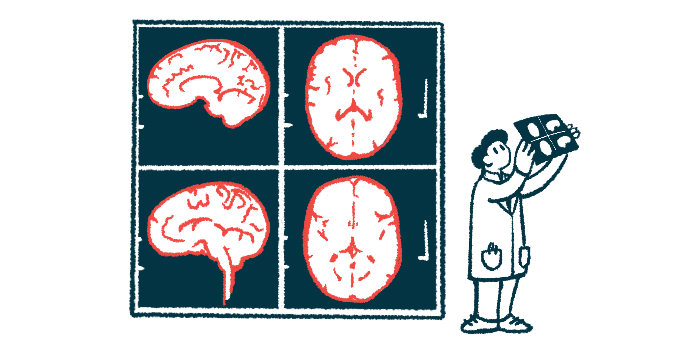PET tracer shows promise for early diagnosis of Parkinson’s: Study
Imaging agent allows visualization of alpha-synuclein clumps
Written by |

An imaging agent for positron emission tomography (PET) scans allowed researchers to visualize, for the first time, abnormal alpha-synuclein protein clumps in the brains of living patients with Parkinson’s disease, a study showed.
By detecting a hallmark feature of Parkinson’s found in relatively lower abundance in the brain compared with protein clumps in Alzheimer’s and other conditions, the new tracer may be able to diagnose Parkinson’s much earlier and provide important clues as to how a person is responding to treatment in the clinic and in clinical trials.
“Imaging techniques for detecting [alpha]-synuclein aggregates [in live patients] could provide definitive information on the disease diagnosis … and would be very useful to evaluate the efficacy of candidate drugs targeting [alpha]-synuclein pathologies,” Hironobu Endo, MD, PhD, senior researcher at the Institute for Quantum Medical Science and leader of the team, said in a press release.
The study, “Imaging α-synuclein pathologies in animal models and patients with Parkinson’s and related diseases,” was published in Neuron.
Roadblock to early diagnosis of Parkinson’s
The accumulation of alpha-synuclein protein aggregates — called Lewy bodies — is a hallmark feature of Parkinson’s disease, as well as some forms of atypical parkinsonism, including Lewy body dementia and multiple system atrophy. Collectively, these disorders are referred to as alpha-synucleinopathies.
While early detection of alpha-synuclein clumps is essential to diagnosing Parkinson’s and determining whether a patient is responding to a given therapy, the small size of the aggregates and their limited abundance is a major roadblock in the development of imaging agents that can detect these clumps.
Despite multiple research efforts, there has been no tracer available to detect the abnormal alpha-synuclein deposits in live patients. Currently, their detection is only possible in brain samples, collected from deceased patients.
Now, scientists in Japan developed of a radiotracer, called C05-05, that allowed them to visualize alpha-synuclein clumps in the brains of live patients via PET scans.
Radiotracers are chemical compounds designed to target a given molecule that provides important information about certain bodily functions. These compounds are modified to emit radiation, which allows them to be detected by PET scans.
The team developed the tracer by making slight modifications to an existing imaging agent, PBB3, which is used to detect aggregates of the tau protein in people with Alzheimer’s.
Detecting deposits in the brain
Using mouse and marmoset models of alpha-synucleinopathies, the researchers showed that C05-05 could bind to alpha-synuclein in the brain with high affinity and selectivity. Deposits were even detected in early disease stages, when abnormal alpha-synuclein proteins are less abundant and generally harder to find.
Researchers could even detect alpha-synuclein in the animals at the single-cell level, using a powerful technology called two-photon microscopy. This may enable scientists to study the molecular behavior of alpha-synuclein aggregates in real time in live animals to better understand how they cause disease.
To assess the clinical potential of C05-05, the researchers conducted an exploratory clinical study involving 10 patients with symptoms of Parkinson’s or Lewy body dementia, as well as eight healthy individuals who served as controls.
In agreement with data from the animal models, the study found C05-05 also allowed the visualization of alpha-synuclein in the patients’ midbrains, a region that includes the substantia nigra. This brain region is involved in the control of voluntary movements, and is one of the most affected in Parkinson’s disease.
“Notably, PET-detectable 18F-C05-05 signals were intensified in the midbrains of [Parkinson’s] and [dementia with Lewy bodies] patients as compared with healthy controls, providing the first demonstration of visualizing [alpha]-synuclein pathologies in these illnesses,” the researchers wrote.
While the new tracer may require some refining to become even more specific to the abnormal alpha-synuclein deposits and have fewer off targets, the findings “provided the first essential information on the capability of the PET probe for capturing Lewy-type [alpha]-synuclein pathologies in humans,” they wrote.







